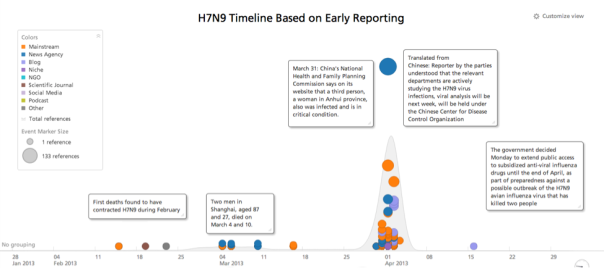Traditional monitoring of arms control treaties, agreements, and commitments has required the use of National Technical Means (NTM)—large satellites, phased array radars, and other technological solutions. NTM was a good solution when the treaties focused on large items for observation, such as missile silos or nuclear test facilities. As the targets of interest have shrunk by orders of magnitude, the need for other, more ubiquitous, sensor capabilities has increased. The rise in web-based, or cloud-based, analytic capabilities will have a significant influence on the future of arms control monitoring and the role of citizen involvement.
Since 1999, the U.S. Department of State has had at its disposal the Key Verification Assets Fund (V Fund), which was established by Congress. The Fund helps preserve critical verification assets and promotes the development of new technologies that support the verification of and compliance with arms control, nonproliferation, and disarmament requirements.
Sponsored by the V Fund to advance web-based analytic capabilities, Sandia National Laboratories, in collaboration with Recorded Future (RF), synthesized open-source data streams from a wide variety of traditional and nontraditional web sources in multiple languages along with topical texts and articles on national security policy to determine the efficacy of monitoring chemical and biological arms control agreements and compliance. The team used novel technology involving linguistic algorithms to extract temporal signals from unstructured text and organize that unstructured text into a multidimensional structure for analysis. In doing so, the algorithm identifies the underlying associations between entities and events across documents and sources over time. Using this capability, the team analyzed several events that could serve as analogs to treaty noncompliance, technical breakout, or an intentional attack. These events included the H7N9 bird flu outbreak in China, the Shanghai pig die-off and the fungal meningitis outbreak in the United States last year.
For H7N9 we found that open source social media were the first to report the outbreak and give ongoing updates. The Sandia RF system was able to roughly estimate lethality based on temporal hospitalization and fatality reporting. For the Shanghai pig die-off the analysis tracked the rapid assessment by Chinese authorities that H7N9 was not the cause of the pig die-off as had been originally speculated. Open source reporting highlighted a reduced market for pork in China due to the very public dead pig display in Shanghai. Possible downstream health effects were predicted (e.g., contaminated water supply and other overall food ecosystem concerns). In addition, legitimate U.S. food security concerns were raised based on the Chinese purchase of the largest U.S. pork producer (Smithfield) because of a fear of potential import of tainted pork into the United States.
The analysis of the U.S. health system response to the fungal meningitis outbreak demonstrated that if this was not a reportable disease and had no central agency tracking the cases, a social media analysis would show the distribution and rapid increase in deaths to initiate a national investigation (e.g., skin rashes, eye irritations, gastrointestinal distress). This reporting is a digital analog to the canary in a coalmine.
Sandia and RF are continuing to refine and improve their analyses by constantly adding more web sources. Work is also being done to enhance researchers’ abilities to add their own documents and mash-up more structured data sets alongside the purely, public data set on a rolling basis. Sandia and RF are creating a custom event extractor for disease symptoms that would serve as a complement to the existing disease outbreak data structure. This would likely prove useful for early identification of emerging or resurgent diseases as well as serve as early warning of possible chemical and biological weapons activity.
To read the full paper, please click here.
About the Authors:
Maynard Holliday – Researcher @ Sandia National Laboratories
Senior systems analysis professional with over 25 years of experience in government and private sector technology development roles. He is currently working on national security systems studies for the Departments of Energy, Defense and State.
Chris Holden – Customer Success Manager @ Recorded Future
Currently writing the Open Source Intelligence blog on smart government analytics using Recorded Future. Academic background in research and writing with a professional interest in digital brand management and marketing with specialties in online brand and issues management, digital media strategy, social media tools.


